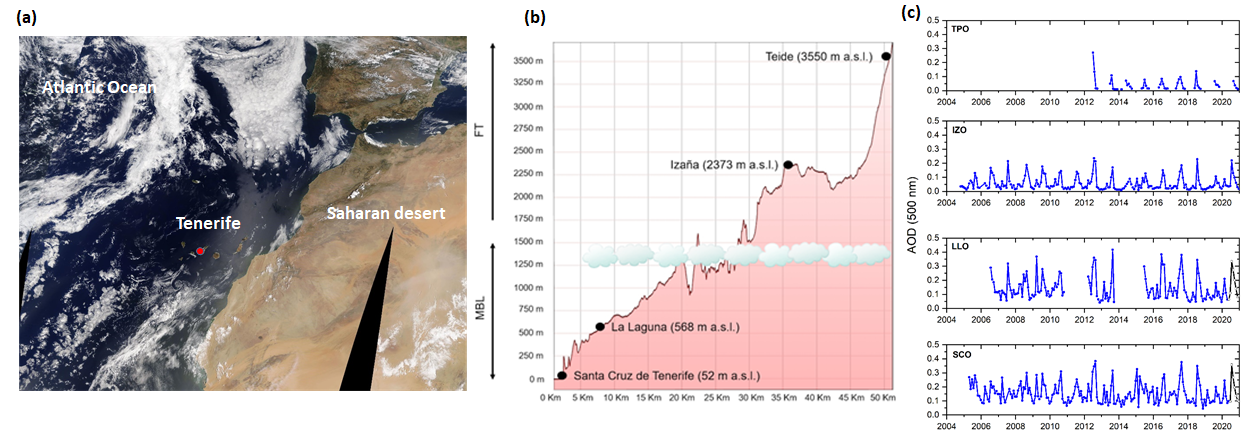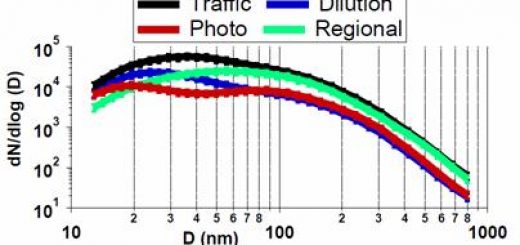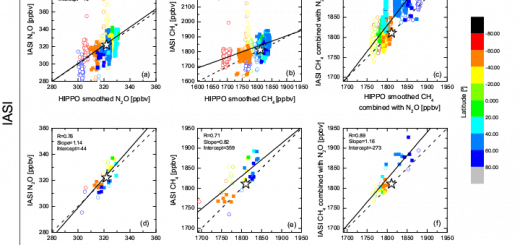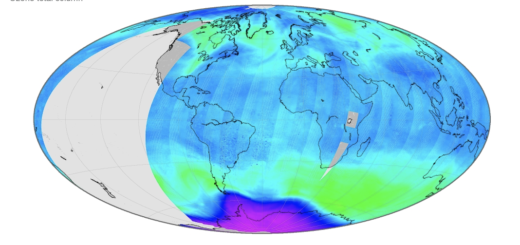Publication of the Paper “Aerosol characterisation in the subtropical eastern North Atlantic region using long-term AERONET measurements”
Click here for the Spanish version
The scientific paper “Aerosol characterisation in the subtropical eastern North Atlantic region using long-term AERONET measurements” has been recently published in the journal Atmospheric Chemistry and Physics (ACP), showing the long-term seasonal evolution (2005–2020) of atmospheric aerosols by using AERONET-NASA observations at four different sites at different altitudes in Tenerife, in the subtropical eastern North Atlantic region. This region can be considered a key location for aerosol monitoring because it is in the path of long-range transports such as mineral dust from the Sahel-Sahara regions, dust or sulfates from North America, or sulfates, biomass burning and other pollutants from North America, Europe or Africa. This site also presents a strong seasonal dependence of dust transport, representative of the almost pure Saharan dust in summer and winter, a strong vertical stratification in the lower troposphere and contrasting aerosol regimes with very stable and low aerosol turbidity within the free troposphere most of the year.
This comprehensive characterisation was performed at four stations strategically located from the sea level to 3555 m on the island of Tenerife (Figure 1): two stations (Santa Cruz de Tenerife – SCO – at sea level and La Laguna – LLO – at 580 m a.s.l.) within the marine atmospheric boundary layer (MABL), and the other two (Izaña – IZO – at 2373 m a.s.l. and Teide Peak – TPO – at 3555 m a.s.l.) within the free troposphere (FT). Quite consistent measurements across the four sites (Figure 2) confirmed an alternation between predominant background conditions and predominant dust-loaded Saharan air mass conditions caused by seasonal dust transport over the subtropical North Atlantic. Background conditions prevail in the MABL and FT for most of the year, while dust-laden conditions are significant in July and August.

Figure 1. (a) MODIS visible imagery showing the location of Tenerife in the northern Atlantic Ocean. Image credit: NASA Worldwide. (b) The elevation profile of Tenerife, indicating the corresponding elevations of the four stations (SCO, LLO, IZO and TPO) and their locations with respect to the marine atmospheric boundary layer (MABL) and the free troposphere (FT). The stratocumulus cloud top is limited by trade wind inversion. (c) Time series of the monthly mean AOD at 500 nm at SCO, LLO, IZO and TPO.

Figure 2. Monthly mean aerosol optical depth (AOD) at 440, 500, 675, 870 and 1020 nm and Ångström exponent (AE440−870 nm) at the four stations. Error bars indicate the standard deviation.
The general conclusion that can be extracted from this paper is that the MABL under background conditions appears as a well-mixed layer with a low aerosol concentration with a predominance of coarse-mode marine aerosols. The clean FT is characterised by remarkably low aerosol loading and a predominant impact of fine-mode aerosols throughout the year. However, under dust-laden conditions and mainly in summer, we observe a predominance of coarse-mode aerosols, and a similar and quite consistent fine-mode fraction in the vertical within the MABL and FT. Similarities in micro-physical and optical intensive aerosol properties confirm that the Saharan Air Layer (SAL) can be considered a well-mixed layer in terms of the particulate composition.
A subsequent long-term trend analysis in Santa Cruz over a 15-year period showed a negative trend in the fine-mode AOD at this coastal urban station. This trend can be linked to the decrease in the concentration of SO2 in response to the large reduction in oil-refining SO2 emissions at Santa Cruz refinery (estimated at 57%). These results suggest that AERONET AOD observations, and specifically the fine-mode AOD, appear to be sensitive enough to detect long-term changes in air quality in a city.
SCO, IZO and TPO stations are managed by the Izaña Atmospheric Research Center of AEMET, while the LLO station is managed by the Grupo de Observación de la Tierra y la Atmósfera (GOTA) of the La Laguna University (ULL).
This type of work on the vertical characterization of aerosols with long data series using grond-based instruments is only possible to be carried out in very few places in the world, where in a relatively short distance it is possible to measure at different levels of the atmosphere. This work complements the one also published by Barreto et al. in 2022 in the same journal entitled “Long-term characterization of the vertical structure of the Saharan Air Layer over the Canary Islands using lidar and radiosonde profiles: implications for radiative and cloud processes over the subtropical Atlantic Ocean”.
The full reference is:
Barreto, Á., García, R. D., Guirado-Fuentes, C., Cuevas, E., Almansa, A. F., Milford, C., Toledano, C., Expósito, F. J., Díaz, J. P., and León-Luis, S. F.: Aerosol characterisation in the subtropical eastern North Atlantic region using long-term AERONET measurements, Atmos. Chem. Phys., 22, 11105–11124, https://doi.org/10.5194/acp-22-11105-2022, 2022.



